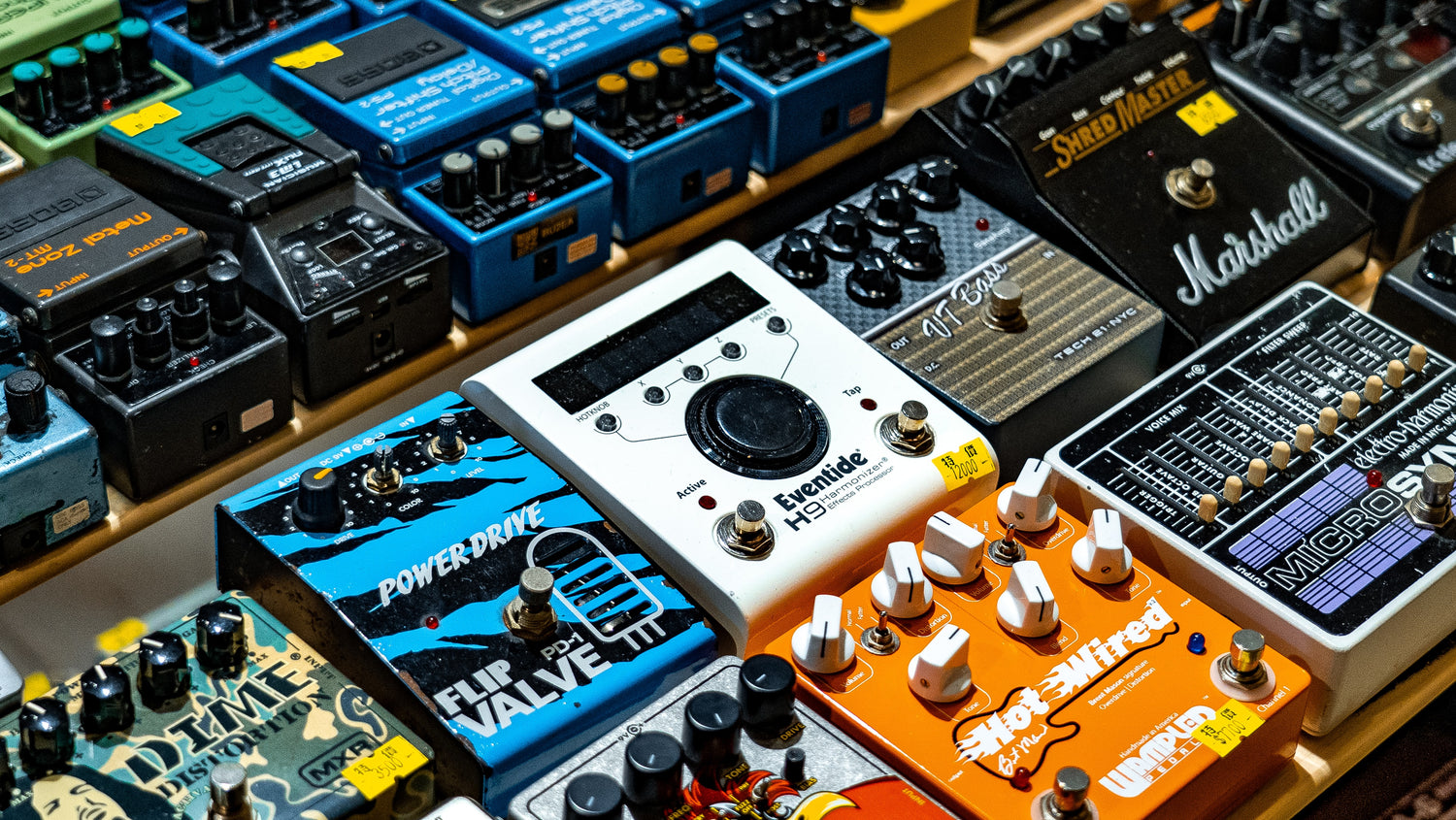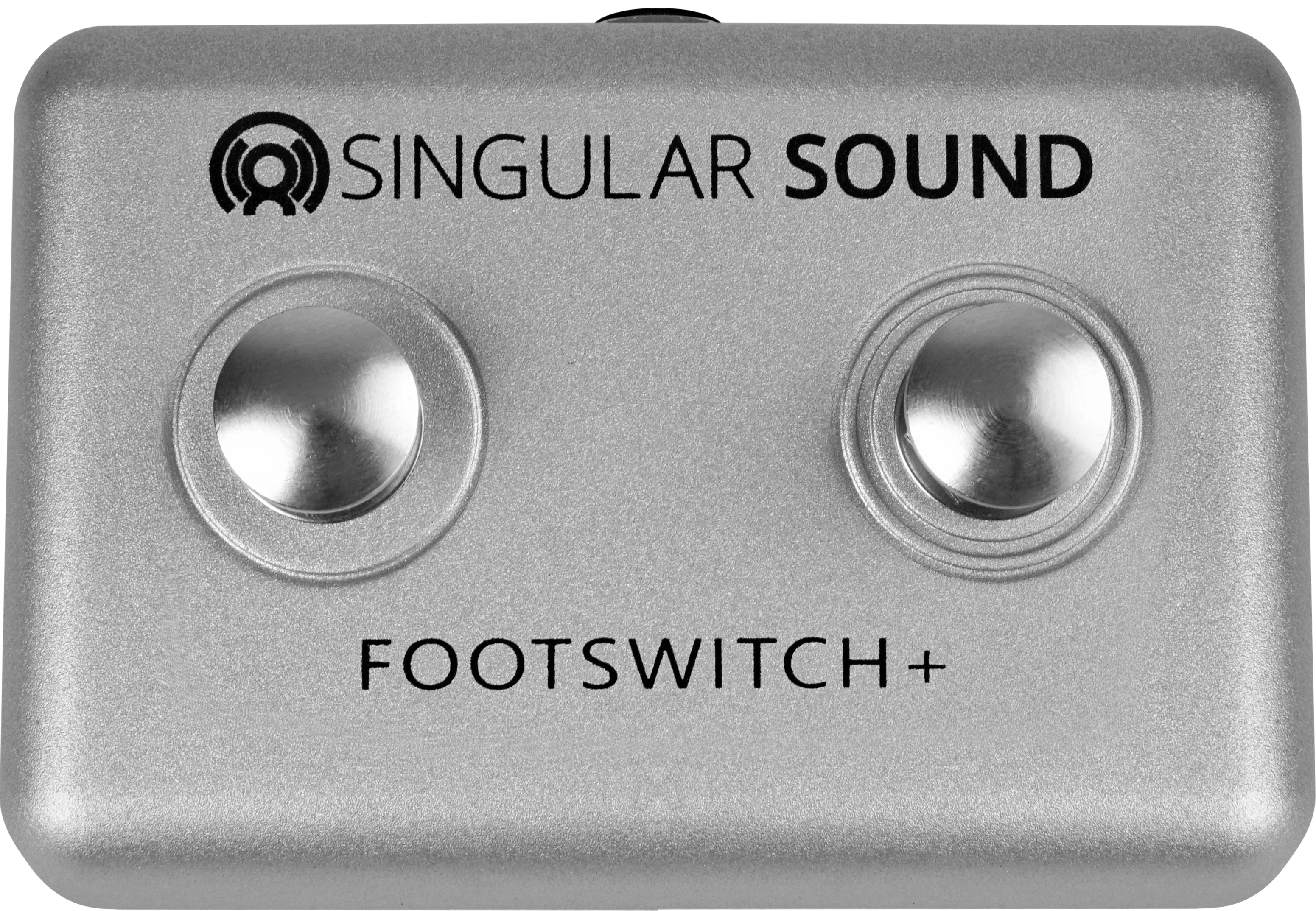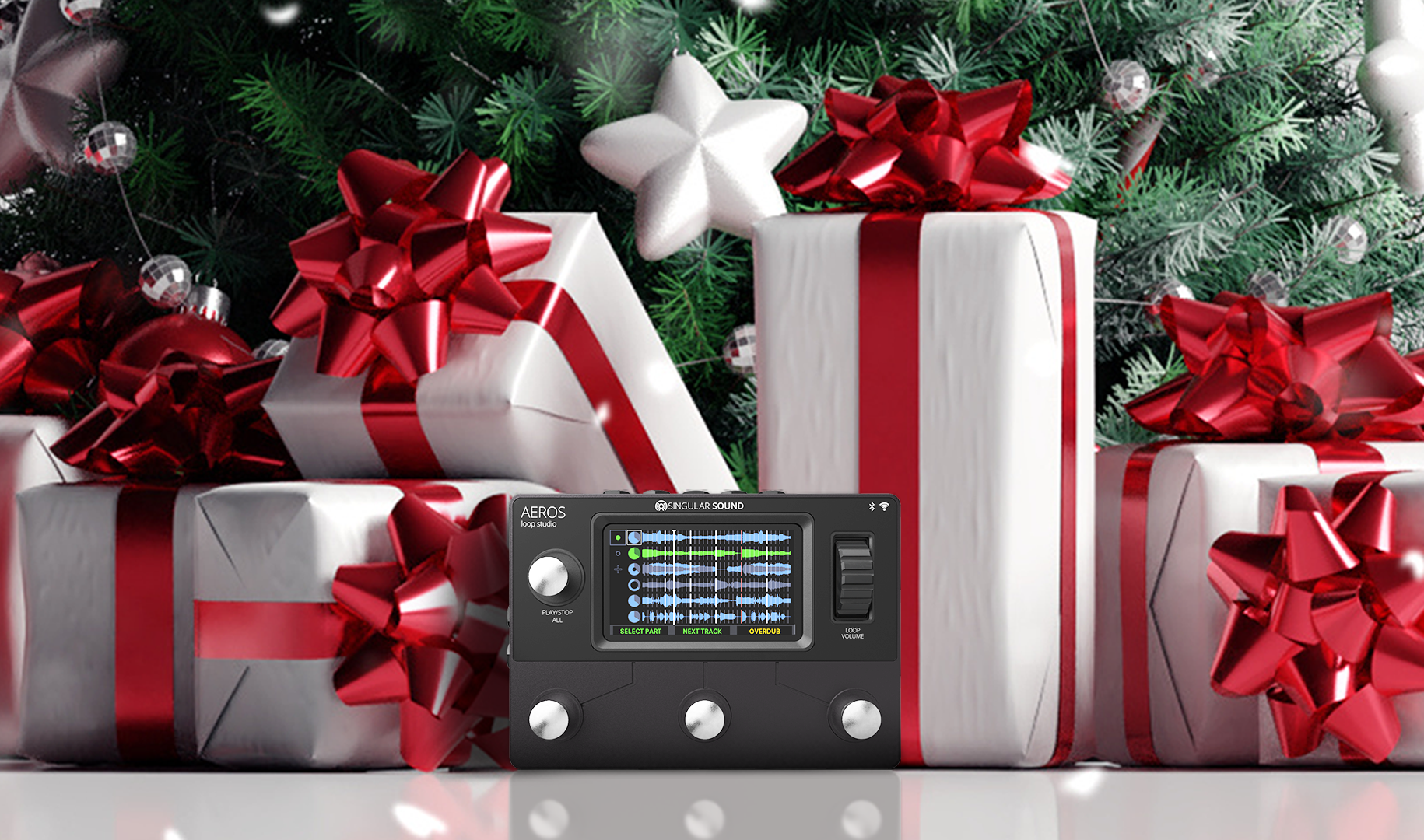Photo by YEH CHE WEI on Unsplash
Effects pedals bring a unique style to your music. They offer alternative ways of driving the sonic arrangement of your tracks. If you’re a guitarist, you’ve most likely used one or two in your practice or performance.
However, effects pedals are not only for guitarists, nor are they strictly analog. When you go through any recording process, sound and audio software plug-ins can offer the same type of effects.
If you’re new to performing or writing music, or haven't experimented much with fx pedals, you might be wondering which ones are best to craft your sound.
The guide below will provide all the info you'll need to differentiate between types of effects pedals, and how sound engineers or guitarists make an informed decision on the pedal that best suits their recordings. So read on to discover how you can up your recording game in the home studio, or level up your live performance.
What are Effects Pedals?
Before diving into the kinds of effects, let’s talk about the effects pedals themselves. Put simply, effects pedals are sound processors in pedal form. They are typically hooked up between an instrument and an amplifier. You'll often hear them called "stompboxes" or guitar pedals, usually controlled via a built-in footswitch.
The goal of fx pedals is to create unique tones, make a song stand out, or achieve a specific style. Thousands of stompbox and pedal manufacturers worldwide provide unique takes on guitar pedal. Let's check out a few of them.
Types of Stompboxes
There are countless types of guitar pedals to choose from. Let’s do a quick review of some of the most popular effect pedals for guitarists and musicians, as well as some of the best models you can purchase based on your budget.
- Delay - musicians and listeners alike love the ethereal echo provided by delay pedals. U2’s “The Edge” provides a popular, example, and they did it long before digital hardware could optimally replicate the analog tape loop effect. Now, of course, you can loop right in the studio.
- Popular Delay stompboxes include MXR Carbon Copy and the Line 6 DL4.
- Reverb - somewhat akin to the delay effect, reverb provides the expansion of sound by reflecting it within a certain space. It adds depth to music, and is often used by studio producers in post-production mixing and mastering.
- Reverb pedals are arguably the most common, but some highly regarded ones are the Earthquaker Afterneath, Empress Reverb, and TC Electronic Hall of Fame 2.
- Distortion - distortion has many names associated with it. Drive, gain, crunch, and fuzz all refer to ways of distorting a signal. You may want to experiment to see which distorted sound works best for your music.
- Some distortion pedals you might try in your home studio are the Pro Co Rat 2, EHX Big Muff Pi, or Ibanez TS9 Tube Screamer.
- Some distortion pedals can double as preamps or full-blown amp simulators. One such example is the VOX Valvenergy Copperhead Drive.
- Modulation - another broad category of sound like distortion, pedals featuring modulation might cover rotary speaker, flanger, tremolo, flanger, phaser, and chorus effects. Modulating your instrument signal will animate to your sound, and some pedals offer rate controls to sync action to the music’s tempo.
- Some classic modulation pedals that guitarists use include the MXR Phase 90 and Strymon Lex.
You will discover countless other fx options as you look at pedals, like Noise Gate, Compressor, Limiter, Pitch, etc. As a musician, it’s important to research and discover what these audio effects can do for your music.
Tips for Musicians with Effects Pedals
Usually, effects pedals are designed for guitarists, and are made to run through an amplifier.
Depending on the effect you're going for, you may need to utilize a low pass filter to get rid of high-end control, especially when using the distortion pedal, to prevent unwanted buzz.
Stompboxes can be expensive, underscoring the importance of choosing the right one. Once you have a clear picture of your budget, you can save up for the pedals you want most. You can often try them out at local music stores to get a feel for them before buying.
Thus far, we’ve covered single-effect pedals. However, there are multi-effect pedal units that you can purchase as well, designed to offer an array of effects within one device. This obviously offers a higher level of convenience, but let’s discuss the pros and cons of each pedal category.
Pros and Cons of Single-Effect Pedals
Single-effect pedals are generally easier to use, as you already know which sound is being featured, so you don’t have to scour menus or scroll through tons of settings. It’s also easier to see which pedals are on or off when playing, so you can easily adjust them as necessary.
However, single-effect pedals must be individually powered and will eat up battery power quick if you don't have a dedicated power supply.
If you purchase more than one single-effect pedal, having many of them together can lead to what is referred to as “tone suck” and mess with your sound. You'll want to be careful to keep the signal between them clean, particularly in live music settings.
Pros and Cons of Multi-Effect Pedals
Multi-effect pedals provide a range of different effects in one unit, which has great appeal. There may also be a wide variety of options within the effects, such as ping-pong delay, dotted 8th note, etc. Additionally, you don't have to worry as much about daisy chaining multiple pedals, making it easier to set up at your next gig.
However, having multiple options like this can be challenging, particularly if you're just starting in your fx pedal experimentation. Multi pedals often make quick adjustments tougher mid-performance as well, requiring more steps to switch between sounds.
You may also find that the quality of each effect is inferior to ones produced by their single-effect pedal counterparts.
Understanding Stompboxes
Downloading some audio software, or working with a music licensing subscription, can be helpful in demonstrating the different styles you can curate with effects pedals.
Experiment with the sounds in your recordings and see what products provide your music with that special “something.” Exploring all of this is incredibly fun, so take your time! Plus, always consider checking out new resources and tools for guitarists to improve your skills.
Hopefully, this guide has provided you a more in-depth look at stompboxes, and the effects that help give your music a lasting impression. Continue to work on your music, chase your passions, and Keep Rockin’.





Leave a comment
All comments are moderated before being published.
This site is protected by hCaptcha and the hCaptcha Privacy Policy and Terms of Service apply.